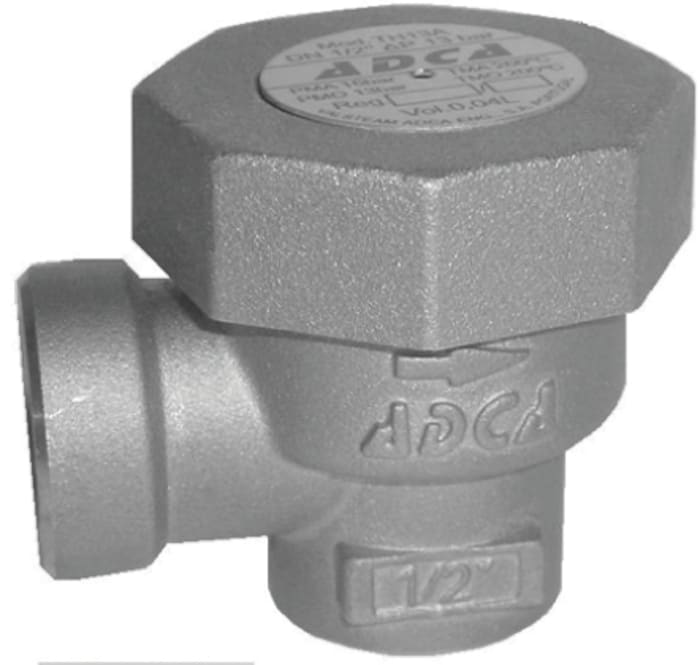Technical Document
Specifications
Brand
Spirax SarcoFemale Connection
1/2 in BSPP
Body Material
Brass
Height
62mm
Maximum Working Pressure
13 bar
Female Thread Size
1/2in
Thread Standard
BSPP
Product details
Thermostatic Air Vent AV13
Body design conditions PN16
Valve body and cap in brass to BS2872 CZ122
Stainless steel capsule
Strainer in stainless steel to ASTM A240 TP 304
Synthetic rubber high fluorine fluorocarbon O-rings
Cold hydraulic test pressure 24 bar g
Maximum operating pressure (saturated steam) 13 bar g
Maximum operating temperature 260°C
Air Vents
Air vents automatically remove air and other incondensable gases from steam systems, reducing heat transfer and affecting steam temperature. They improve heat transfer, while saving energy, and maintain process performance where temperature is critical. Their use reduces corrosion and maintenance costs, promotes even heating and improves product quality.
€ 430.54
€ 430.54 Each (ex VAT)
€ 512.34
€ 512.34 Each (inc. VAT)
1
€ 430.54
€ 430.54 Each (ex VAT)
€ 512.34
€ 512.34 Each (inc. VAT)
Stock information temporarily unavailable.
1
Stock information temporarily unavailable.
Technical Document
Specifications
Brand
Spirax SarcoFemale Connection
1/2 in BSPP
Body Material
Brass
Height
62mm
Maximum Working Pressure
13 bar
Female Thread Size
1/2in
Thread Standard
BSPP
Product details
Thermostatic Air Vent AV13
Body design conditions PN16
Valve body and cap in brass to BS2872 CZ122
Stainless steel capsule
Strainer in stainless steel to ASTM A240 TP 304
Synthetic rubber high fluorine fluorocarbon O-rings
Cold hydraulic test pressure 24 bar g
Maximum operating pressure (saturated steam) 13 bar g
Maximum operating temperature 260°C
Air Vents
Air vents automatically remove air and other incondensable gases from steam systems, reducing heat transfer and affecting steam temperature. They improve heat transfer, while saving energy, and maintain process performance where temperature is critical. Their use reduces corrosion and maintenance costs, promotes even heating and improves product quality.



